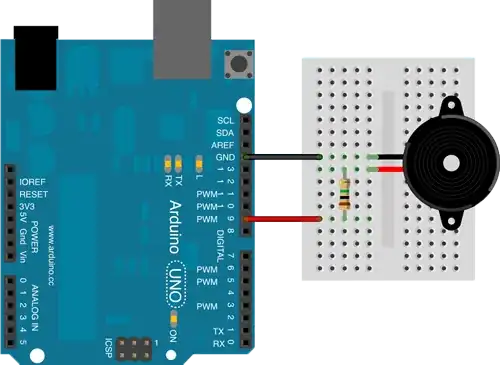To summarize other people's answers:
Arduinos have a whole bunch of GPIO, or general purpose I/O, pins. They can be configured as digital inputs or digital outputs. Certain pins can also be configured as analog inputs or PWM outputs.
For a simple digital pin, if it is an input, it has nearly infinite impedance. (It looks like an open connection.)
If it's an output, it acts like a current source (connected to +5V) if it's HIGH, and acts like a current sink (connected to ground) if it's LOW.
Arduino I/O pins (on most boards, check your board's specs) have a hard limit of 40mA of current flowing through them, but you should generally keep the current below 20 mA.
Is a ground connection the same as a negative connection? Sort of. Some circuits include ground, one or more positive voltage sources, and one or more negative voltage sources. Audio (analog) circuits, for example, often need ground, +12, and -12 volts.
Arduinos don't deal with negative voltages, and applying a voltage that's less than ground to any pin will likely destroy it.
Think in terms of positive voltage and ground, not positive and negative. It's less ambiguous.
Don't think of Arduino pins as being power sources. Remember that they are LOGIC pins, and only put our very small amounts of current. Trying to source or sink too much current from an Arduino pin may destroy it.
If you need to source or sink more than 20mA, use a transistor as a switch to handle the higher current load.
In addition to all that, you need to watch the total current that you pass through all your logic pins, and also the total current you draw from the power supply. Check the specs on your board and make sure you stay within the limits.
